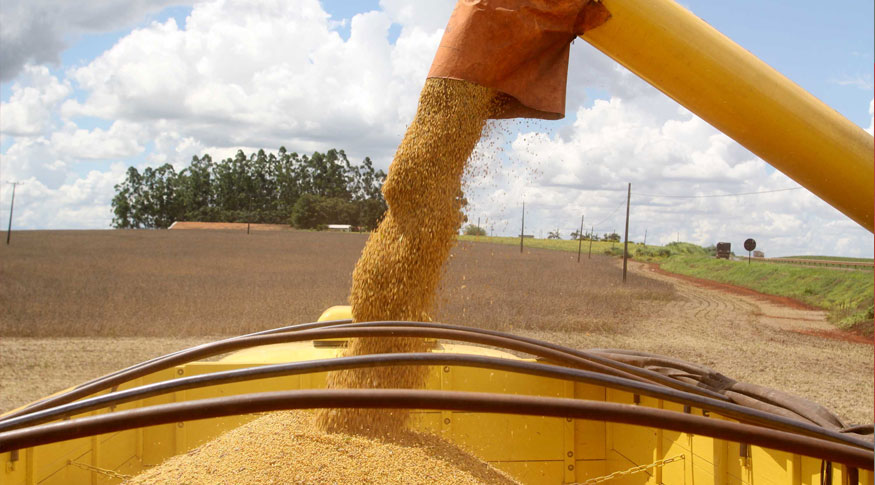Agricultural production
January´s estimate points out record harvest of 302.0 million tonnes in 2023
February 08, 2023 09h00 AM | Last Updated: February 08, 2023 01h16 PM

The Brazilian harvest of cereals, legumes and oilseeds is expected to reach 302.0 million tonnes according to the January´s estimate of the Systematic Survey of Agricultural Production (LSPA), released today (8) by the IBGE, This value is 14.7% higher (or 38.8 million tonnes) than the harvest obtained in 2022 (263.2 million tonnes) and 1.9% higher than the December 2022´s estimate (5.7 million tonnes). A record is expected in the output of soybeans and corn.
The area to be harvested was of 75.8 million hectares, representing a growth of 3.5% against the area harvested in 2022, an increase of 2.6 million hectares. The area to be harvested rose 537,459 hectares (0.7%) in relation to the previous month.
“The sound increase of 14.7% over 2022 is due to the fact that soybeans had registered a crop failure last year. Two big surprises came in the beginning of 2023: the record in the production of soybeans and corn, due to a very good summer harvest, as well as a positive expectation for the second crop, because the weather in the Federation Units has helped the crops, except for Rio Grande do Sul, where rainfall delayed and it is below the average,” highlights Carlos Barradas, manager of the survey.
As the major commodity in Brazil, soybeans grew 23.4% in relation to the production obtained in 2022, a sound expansion, though over a lower basis in 2022 due to climate problems. That oilseed should hit an output of 147.5 million tonnes. As for corn, the estimate was of 122.5 million tonnes (29.4 million tonnes of corn in the first crop and 93.1 million tonnes for corn in the second crop). That represents a rise of 11.2% over 2022.
“The first harvest of corn - planted in September/October and harvested in January/February - grew 15.8%, reminding that it lost in the same period of 2022. The highlight will be the second crop, which begins to be planted now, after the harvest of soybeans. As the agricultural year began on time, the planting window is big, which will provide more climate security,” analyzes the manager of the survey.
Coffee is another highlight, as its output is surprisingly increasing in relation to 2022, with a rise of 5.7%. Considering the two species, arabica and canephora, the production added up to 3.3 million tonnes or 55.3 million 60-kg sacks. It is estimated that the arabica species should grow 13.7%, though 2023 is a year of negative biennial bearings.
“It was expected to drop the production, but the volume expands because it dropped in 2022, even being a year of positive biennial bearings. In other words, biennial bearings have reversed,” explains Barradas. On the other hand, the canephora species fell 8.9%, impacted by high production costs,” concludes the manager of the LSPA.
He also highlights that the harvests of rice and beans will be sufficient to supply the domestic consumption.
Five regions rise the production estimates
In January, the production estimate of cereals, legumes and oilseeds rose compared with 2022 in five Major Regions: Central-West (8.6%), North (11.1%), Southeast (1.0%), Northeast (1.8%) and South (38.6%). As to the monthly change, the North Region (0.1%), South (2.0%) and Central-West (2.9%) increased. The Northeast and Southeast regions remained stable.
Mato Grosso leads the national production of grains with a share of 29.3%, followed by Paraná (14.9%), Rio Grande do Sul (13.0%), Goiás (9.2%), Mato Grosso do Sul (8.1%) and Minas Gerais (5.8%). These states together accounted for 80.3% of the national forecast.
About the LSPA
Launched in November 1972 aiming at addressing the demand of users for monthly short-term statistical information, the LSPA provides estimates of planted area, harvested area, amount produced and average yield of products selected based on criteria of economic and social importance for Brazil. It does not only monitor each crop investigated in the calendar year of reference, from the intention to plant up to the end of the harvest, but also presents the forecast for the coming year, with surveys in the months of October, November and December. Access the data on Sidra.




















